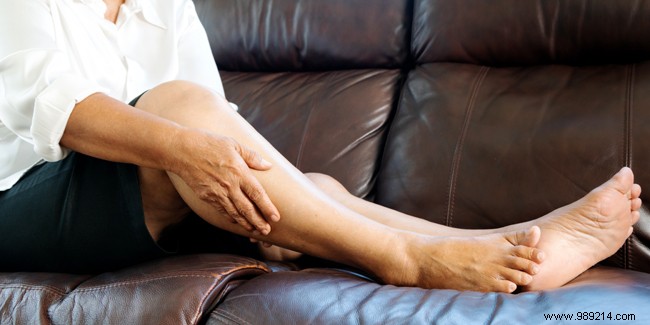
Calf pain can be a sign of a minor problem such as a bruise following a blow, body aches or a strain. But a sore calf can also be a sign of a much more serious problem. How to identify the origin of calf pain? How to cure it ? Here are our answers.
After a hike, bike ride, run, or tennis match, you experience calf pain. The causes are, in the vast majority of cases, not serious. Here are the most common causes.
Aches can explain the pain. In this case, quite logically, both calves are concerned. Aches are caused by poor warm-up, lack of stretching, insufficient hydration (before, during and after the session), or too intense physical activity. If aches are the cause of your pain, the pain will disappear after about 24 hours.
Another minor cause of calf pain, contracture is characterized by a muscle contraction that does not pass. It is caused by excessive muscle activity or abnormal activity. The pain appears not during the effort but a few after. It is not uncommon for a contracture to occur after a cramp.
Muscle strain, following a sporting activity, can lead to pain in the calf. The fibers that make up the muscle tear. The elongation is easy to identify because the pain is sharp. If the tear is significant, it is called a breakdown. A medical consultation is recommended. Those affected limp for a few days and sometimes need crutches. Treatment with painkillers may be offered. Depending on the severity of the tear, all sports activity should be stopped for 3 to 6 weeks.
Muscle rupture is a much more serious tear than straining or straining. Indeed, all the muscle fibers are broken. Muscle rupture is very painful. It is advisable to relieve the person concerned with ice and then to bring him quickly to a hospital. An ultrasound is done to find out the extent of the injury. A treatment based on painkillers and anti-inflammatories. Several rehabilitation sessions are to be planned with the physiotherapist.
Calf pain may be mild. But sometimes, it can be a sign of a much more serious pathology. If the calf pain radiates to the thigh, it may be caused by a blood clot. This is called deep vein thrombosis, also called phlebitis. This blood clot blocks venous return. This circulation disorder causes sometimes intense pain. The calf swells and shows redness. A moderate fever may be observed.
The risk of phlebitis is particularly high during long trips, especially by plane. Sedentary lifestyle should be reduced on a daily basis to promote blood circulation.
Sudden pain that affects the ankle and the lower part of the calf can be caused by the rupture of the Achilles heel. This connects the muscle and bone at the back of the ankle. Most often, this break occurs when landing a jump. Signs that indicate a ruptured Achilles heel are severe pain in the back of the calf and a limping patient.
If the calf pain is unbearable, if it is disabling or if it is accompanied by other symptoms such as redness, fever or inflammation, you should consult. Depending on the severity of the injury, you will refer either to your doctor or to an emergency service.
After a medical questionnaire about your medical history and symptoms. He then proceeds to an auscultation of the calf. To rule out the risk of phlebitis, a blood test including a biological assay of D-Dimers is performed. A Doppler ultrasound can also be considered to measure the severity of the pathology.
Each injury or pathology has its treatment. In case of muscle injury, a rest period must be respected. Anti-inflammatories and painkillers will be prescribed. If the problem is venous, treatment includes anti-coagulants and the wearing of compression stockings is highly recommended. Several rehabilitation sessions may be prescribed depending on the patient's needs.
You can prevent some calf pain with regular physical activity. Many pathologies are caused by a sedentary lifestyle. By moving regularly, it is possible to strengthen your muscles and boost blood circulation.